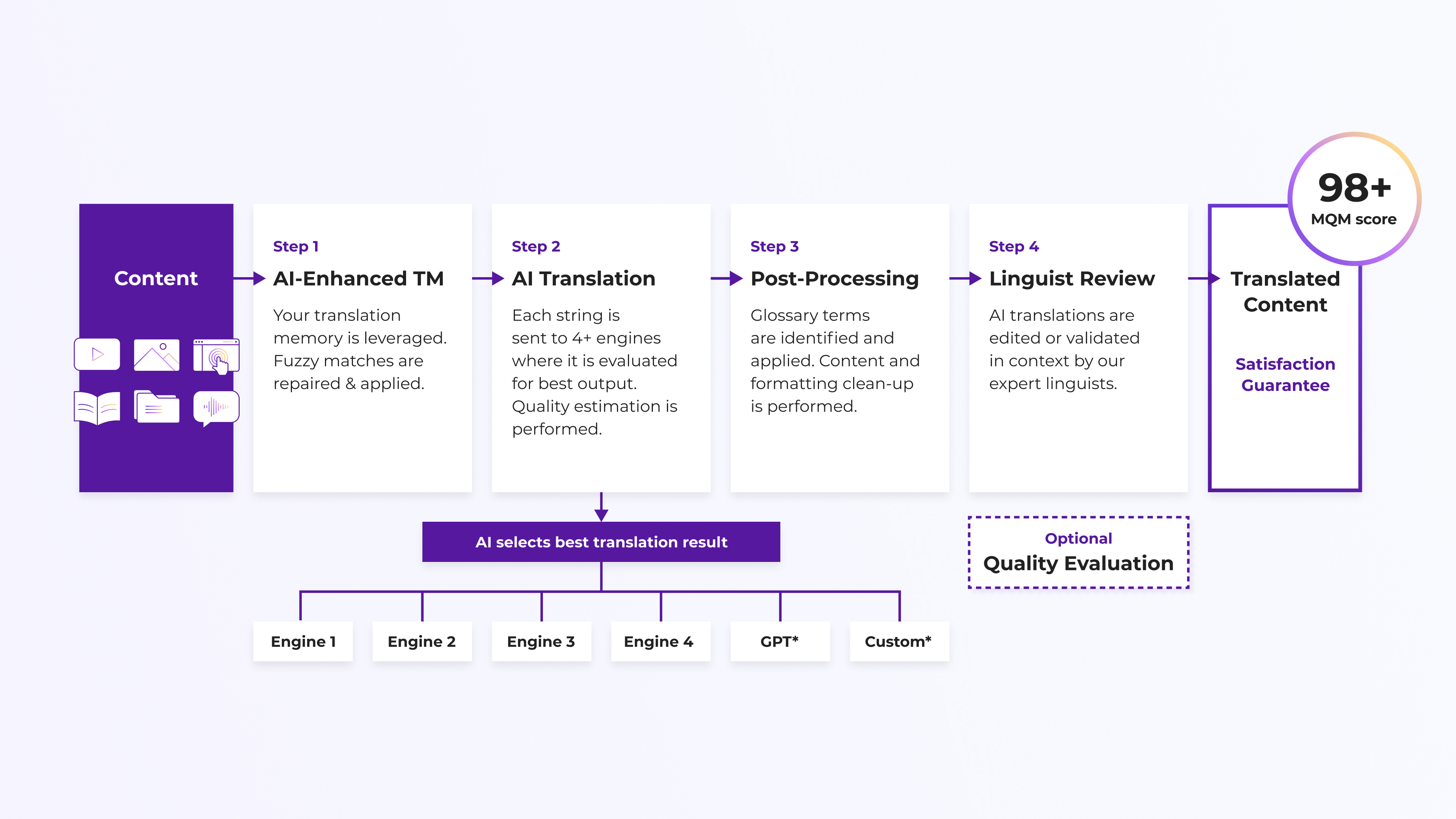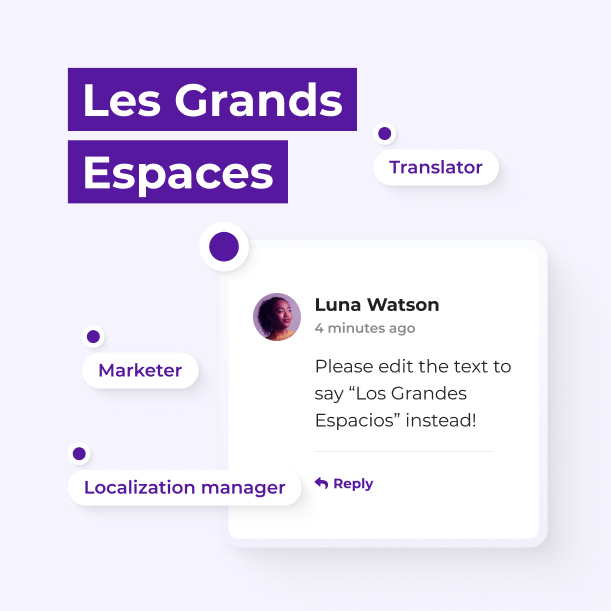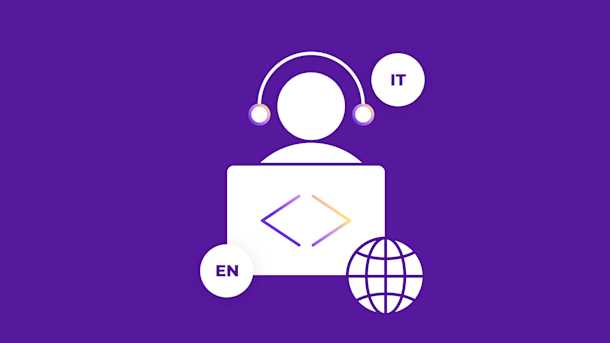The global engineering industry has seen an increase in opportunities for doing business across borders. This is because international trade is growing quickly and demand for specialized technical skills from other countries is increasing.
However, these opportunities also involve dealing with the language and cultural differences that come with cross-border projects. Professional engineering translation services are therefore more important than ever for helping engineers communicate and work together smoothly, regardless of their location.
As engineering firms seek to expand their global footprint, the growing trend of integrating AI into translation has revolutionized the industry. In fact, over 60% of global companies are using AI-powered tools to enhance translation speed and efficiency. But maintaining high-quality translations while preserving cultural nuances is still a delicate balancing act.
This article will explore the unique challenges that engineering firms face in global markets and provide strategic advice to help your company leverage specialized translation services to overcome these obstacles.
The role of translation in engineering
Translations are critical in the engineering industry for accurate communication, compliance, and global reach. Engineering projects often involve complex technical terminology, critical information, and collaboration across international teams and markets. Because of this, accurately translating engineering documents, such as design specifications, safety manuals, and project proposals, is essential for avoiding costly mistakes, legal issues, and miscommunication.
For an example of this, let’s look at Audi’s upcoming e-tron electric car. By translating every automotive component, specification, and technical detail into its target language (French, in this case), Audi helps its audience to fully understand the vehicle and make informed purchasing decisions.
 Audi translated its car specifications into French. (Source)
Audi translated its car specifications into French. (Source)
Engineering translations must comply with international regulations to accurately convey critical information across languages and cultures. This is essential for ensuring the safety, functionality, and legal compliance of engineering products, systems, and processes.
Some regulations and standards that these companies must follow include:
- Standards from the Occupational Safety and Health Administration, which safeguard all types of workplaces
- The National Electrical Code, which provides detailed guidelines on grounding, overcurrent protection, equipment coverings, safe electrical system construction, and wiring procedures
In order for manufacturers, installers, and operators to properly apply these safety measures and sidestep expensive errors or legal troubles, precise translations of these standards and safety materials are necessary. Without high-quality engineering translations, companies risk safety hazards, lawsuits, and damaged reputations—which makes translation a vital component of successful engineering projects worldwide.
Professional translation services that specialize in technical terminology can help engineering firms comply with local and international standards, improve customers’ experience with multilingual content, and expand their global footprint by offering localized versions of their products and services.
What types of engineering content should you translate?
Engineering firms should translate a wide range of engineering content in various file formats to effectively communicate and collaborate across different regions and languages.
Let’s take a look at some key types of engineering content that require translation:
- Technical documents and standards: These documents provide detailed information about product designs, data sheets, dimensions, materials, and performance requirements. Accurate technical translations prevent misunderstandings during the manufacturing or construction process.
- User and maintenance manuals: Operating manuals help users understand how to operate and maintain products safely and effectively. Translating these documents into users’ native language improves their understanding and safety. In aerospace engineering companies, for example, translating specialized documents about aerodynamics, fluid mechanics, and aircraft control is critical for understanding and implementing complex aerospace systems.
- Technical drawings: Computer-aided design (CAD) drawings are blueprints for products. CAD translations must take design considerations, including additional space requirements and reading direction variations in different languages, into account.
- Technical patents: Patent translations are crucial for protecting intellectual property and complying with filing requirements in different countries.
- Project reports: These reports track progress and issues. Translations make achieving transparency and alignment among all stakeholders easier.
- Compliance reports: Accurate translations help companies comply with international standards and local regulations.
- Training material and manuals: Translating and transcribing e-learning courses and training manuals allows employees to understand the skills and procedures they need for their roles.
- Contracts: Accurately translating legal agreements and statements of work helps companies comply with local laws and regulations and protects the interests of all parties involved.
- Safety guidelines and operating instructions: These documents are critical for maintaining workers’ safety across different regions where equipment installation or operation occurs.
- Marketing materials: Translating marketing materials like brochures, presentations, and websites helps engineering firms expand their global reach and visibility.
- Research papers and reports: Chemical engineering research often involves complex scientific and technical concepts. Translating these papers and reports expands their reach globally.
The challenges of cross-border engineering translation
Translating specifications and documents across different engineering fields involves navigating a range of challenges. Here are some critical aspects to consider:
Highly technical terminology
Different engineering verticals, such as mechanical engineering or civil engineering, have their own unique terminology and jargon. Translators must be subject matter experts within your company’s domain, as well as native-speaking expert linguists, to provide accurate translations.
For example, engineers use finite element analysis (FEA) as a computational technique to simulate and analyze complex systems. The French term analyse par éléments finis (AEF) is a direct translation that accurately conveys the meaning. However, the engineering community may not recognize that the abbreviation “AEF” refers to the same concept as “FEA.” As a result, translators may need to add additional context during translation.
A variety of digital formats
The increasing use of digital formats like CAD files, 3D modeling files, virtual reality simulations, and cloud-based databases in engineering presents additional translation challenges. The specialized terminology associated with these formats requires translators to have a deep understanding of both the technical content and its context.
For instance, terms related to specific CAD software functionalities or 3D modeling techniques may require an expert who understands the nuances in both the source and target languages. Additionally, the fact that many engineering documents are not just about language but also about precise technical specifications may also pose challenges for translation teams.
Cultural ambiguity
Engineering projects often involve collaboration between teams from diverse cultural backgrounds. Translators must be sensitive to cultural differences and ensure that translated text resonates with each target audience. Idioms, colloquialisms, and cultural references can be especially challenging to translate accurately.
Translation ambiguity is particularly problematic in engineering, where even a slight misinterpretation can lead to costly mistakes. Machine translation tools alone often struggle with contextual ambiguity, which makes human oversight essential for accuracy.
English’s prevalence in technical fields
English is the lingua franca of many technical and engineering fields due to historical, economic, and cultural factors. As a result, a significant amount of engineering research, documentation, and information is originally available in English. This creates challenges for firms that want to translate engineering content into languages that may not be able to communicate technical terminology with the same level of precision.
Strategies for achieving successful engineering translations
Engineering translation requires a unique blend of technical expertise, linguistic proficiency, and cultural sensitivity. Here are some strategies to help you achieve precision and clarity in your engineering translation projects:
Partner with professional translation and language service providers
Engineering translation is not just about converting text from one language to another. It also involves understanding the technical concepts, terminology, and nuances that are specific to the engineering field. Professional translators with deep subject matter expertise can accurately translate complex technical documents, ensuring that the translated content is both technically correct and culturally appropriate.
Additionally, native speakers’ intimate understanding of the target audience’s cultural nuances and values allows them to create translations that resonate more deeply. This expertise is particularly important when dealing with specialized fields like mechanical engineering, electrical engineering, or aerospace engineering, where precise terminology and technical accuracy are paramount.
With Smartling’s translation services, you gain access to an expansive network of native-speaking translators, along with industry-leading translation tools. This combination provides more efficient and accurate translations at scale.
Leverage translation memory
Translation memory is a specialized terminology database that saves industry-specific terms that you’ve previously translated, as well as definitions and synonyms, which helps you maintain consistency and precision in translated content. It also accelerates translation speed and reduces translators’ workload by eliminating redundant translations. Smartling’s translation memory feature allows users to build a robust database of their previously translated strings to maintain consistency across all documents.
Enhance accuracy and speed with technology
Engineering companies often must translate high volumes of technical content quickly and accurately, which can be challenging. Fortunately, advancements in translation technology can significantly boost both the speed and quality of engineering translations.
One key way to achieve this is to leverage the power of AI translation tools. Modern AI-powered human translation allows you to use AI to accelerate your engineering content translations with a high degree of accuracy, and human post-editing ensures that final translations are polished and error-free. This solution can help you automate a large portion of the translation process, dramatically increasing your team’s productivity.
 AI-powered human translation with Smartling (Source)
AI-powered human translation with Smartling (Source)
Additionally, a computer-assisted translation (CAT) tool like Smartling’s offers features like visual context, which increases your team’s efficiency and accuracy. Smartling also includes automated quality checks to proactively catch errors and inconsistencies.
Plan for seamless collaboration with all translation stakeholders
Effective engineering translation requires close collaboration between the translator and the engineer or technical expert. This helps translators understand the technical context and clarify any ambiguities.
A translation management system (TMS) like Smartling’s can provide seamless collaboration between all internal and external translation stakeholders. A TMS provides a centralized platform to manage the entire translation workflow, from content extraction to final delivery. This allows translators, editors, reviewers, project managers, and engineers to access and collaborate on projects in real-time.
 Smartling’s TMS facilitates seamless collaboration. (Source)
Smartling’s TMS facilitates seamless collaboration. (Source)
How Smartling tackles engineering translations
Smartling is a leading translation platform that provides professional language services. Its cloud-based TMS, Neural Machine Translation Hub, and localization services empower organizations to manage and translate content on a global scale.
Here’s how Smartling can help you translate your engineering content at scale:
- CAT tool: This built-in tool provides translators with visual context and syncs with updates to your translation memory to provide the highest-quality technical translation services.
- Integrations: Smartling integrates with content platforms to automate the content submission and translation retrieval processes.
- TMS: Smartling’s TMS enhances project management and stakeholder cooperation by eliminating manual tasks, speeding up the localization process.
- Generative AI and large language models: These cutting-edge technologies ensure that translations adhere to your company's style guidelines, maintain your brand voice, and improve grammatical accuracy.
- Native-speaking expert translators: Smartling’s robust network of professional translators—who specialize in 50 different business verticals, including engineering—helps companies efficiently scale their engineering content across languages while maintaining high quality and technical accuracy.
Want to streamline your engineering translations without sacrificing quality? Book a meeting with our experts today.








